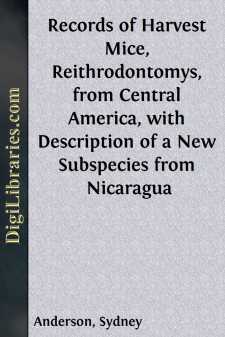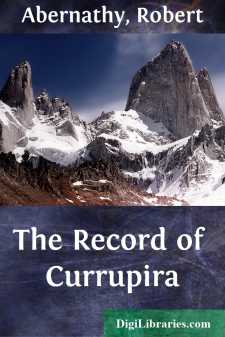Categories
- Antiques & Collectibles 13
- Architecture 36
- Art 48
- Bibles 22
- Biography & Autobiography 813
- Body, Mind & Spirit 142
- Business & Economics 28
- Children's Books 13
- Children's Fiction 10
- Computers 4
- Cooking 94
- Crafts & Hobbies 4
- Drama 346
- Education 46
- Family & Relationships 57
- Fiction 11828
- Games 19
- Gardening 17
- Health & Fitness 34
- History 1377
- House & Home 1
- Humor 147
- Juvenile Fiction 1873
- Juvenile Nonfiction 202
- Language Arts & Disciplines 88
- Law 16
- Literary Collections 686
- Literary Criticism 179
- Mathematics 13
- Medical 41
- Music 40
- Nature 179
- Non-Classifiable 1768
- Performing Arts 7
- Periodicals 1453
- Philosophy 64
- Photography 2
- Poetry 896
- Political Science 203
- Psychology 42
- Reference 154
- Religion 513
- Science 126
- Self-Help 84
- Social Science 81
- Sports & Recreation 34
- Study Aids 3
- Technology & Engineering 59
- Transportation 23
- Travel 463
- True Crime 29
Sort by:
by:
Fanny Kemble
CHAPTER I. A few years ago I received from a friend to whom they had been addressed a collection of my own letters, written during a period of forty years, and amounting to thousands—a history of my life. The passion for universal history (i.e. any and every body's story) nowadays seems to render any thing in the shape of personal recollections good enough to be printed and read; and as the...
more...
by:
Robert Barr
I.—LORD STRANLEIGH ALL AT SEA. A few minutes before noon on a hot summer day, Edmund Trevelyan walked up the gang-plank of the steamship, at that moment the largest Atlantic liner afloat. Exactly at the stroke of twelve she would leave Southampton for Cherbourg, then proceed across to Queenstown, and finally would make a bee-line west for New York. Trevelyan was costumed in rough tweed of subdued...
more...
CHAPTER I THE BLUE BIRD The tall youth, turning to the right, went down a gentle slope until he came to a little stream, where he knelt and drank. Despite his weariness, his thirst and his danger he noticed the silvery color of the water, and its soft sighing sound, as it flowed over its pebbly bed, made a pleasant murmur in his ear. Robert Lennox always had an eye for the beautiful, and the flashing...
more...
CHAPTER I ELEMENTS OF EDUCATION If anybody cares to read a simple tale told simply, I, John Ridd, of the parish of Oare, in the county of Somerset, yeoman and churchwarden, have seen and had a share in some doings of this neighborhood, which I will try to set down in order, God sparing my life and memory. And they who light upon this book should bear in mind not only that I write for the clearing of...
more...
General Articles and Works. 1. The Philosophic Grammar of American Languages as set forth by Wilhelm von Humboldt; with the translation of an unpublished Memoir by him on the American Verb. pp. 51. In Proceedings of the American Philosophical Society, 1885. 2. On Polysynthesis and Incorporation as characteristics of American Languages. pp. 41. In Proceedings of the American Philosophical Society, 1885....
more...
CHAPTER I. It was on the last day of summer, 1846, that a large vessel of war lay in the stream of Boston Harbor; presently a dirty little steam tug, all bone and muscle, came burroughing alongside. The boatswain and his mates whistled with their silver pipes, like Canary birds, and the cry went forth, to heave up the anchor. Soon the ponderous grapnell was loosened from its hold, and our pigmy...
more...
by:
Sydney Anderson
Since 1952 when Hooper's review of Latin American harvest mice was published, collectors from the Museum of Natural History of the University of Kansas have visited several countries in Central America, and have obtained many additional specimens. Among these we find a new subspecies of Reithrodontomys fulvescens from Nicaragua, significant extensions of known geographic range for several other...
more...
by:
Robert Abernathy
James Dalton strode briskly through the main exhibit room of New York’s Martian Museum, hardly glancing to right or left though many displays had been added since his last visit. The rockets were coming home regularly now and their most valuable cargoes—at least from a scientist’s point of view—were the relics of an alien civilization brought to light by the archeologists excavating the great...
more...
CHAPTER I EARLY CAREER The Canadian people have had a varied experience in governors appointed by the imperial state. At the very commencement of British rule they were so fortunate as to find at the head of affairs Sir Guy Carleton—afterwards Lord Dorchester—who saved the country during the American revolution by his military genius, and also proved himself an able civil governor in his relations...
more...
Chapter I. ne September morning, many years ago, when the Channel Islands seemed further off than they do now, and for some of them communication with the outer world hardly existed, some two hours after the sun had risen out of the sea, and while the grass and the low-growing bushes were still fresh with the morning dew, a young girl tripped lightly along the ridge of a headland which formed the south...
more...











